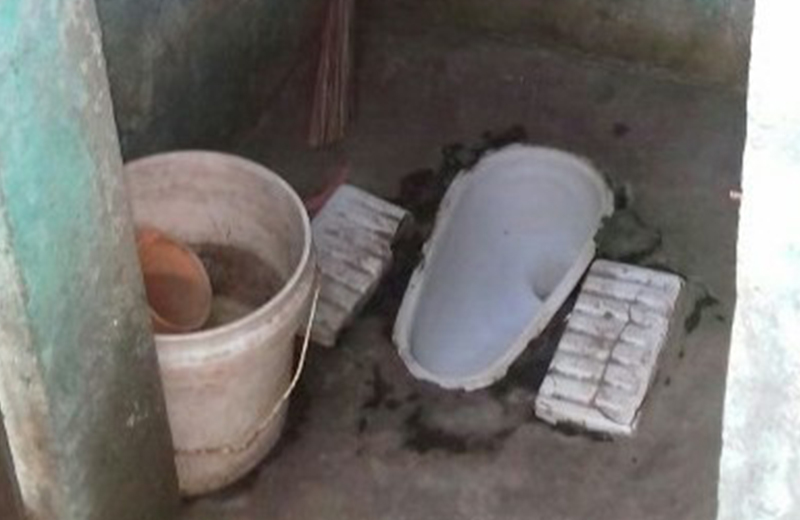As I was mentally getting prepared for an almost 12-hour journey from Delhi to Shimla, my thoughts were fixed on one crucial thing, to get through the journey without having to use any of the public toilets on the way. The highways do not have any specific public toilet structures and by public toilets, I refer to those available in hotels or restaurants situated on the highway. I am not ashamed to confess that I suffer from toilet anxiety or toilet phobia particularly at the thought of using public toilets. The fear of having to use an unhygienic and a reeking toilet compels me to consciously hold the urge to urinate, no matter how bumpy the ride is. Though it may sound anomalous, it is a fact that many women silently endure this inescapable dilemma while traveling. This pernicious tendency to procrastinate the urge to pee not only increases one’s likelihood of developing urinary tract infections (UTIs) but also intensifies the anxiety level. This then leads us to an important question, why is there a vacuity in sanitation amenities between urban set ups?
The answer is rather direct – sanitation along state and national highways has not received adequate attention within the WASH sector or policy in India. In the context of urban sanitation, which in recent years has received concerted attention among policy-makers and practitioners in India, the provision of toilets along National or State Highways is a missing component. The vision of the National Sanitation Policy 2008 by the Ministry of Urban Development, Government of India clearly states that, “All Indian cities and towns become totally sanitized, healthy and livable and ensure and sustain good public health and environmental outcomes for all their citizens with a special focus on hygienic and affordable sanitation facilities for the urban poor and women” (NUSP, 2008 www.moud.gov.in). Providing sanitation related amenities along State or National Highways certainly does not come under its purview and this gap has been filled to some extent by other Government departments and agencies like the Ministry of Road Transport and Highways and the National Highway Authority of India (NHAI).
The Ministry of Road Transport and Highways has dove-tailed the sanitation component into their broader sector guidelines and in 2013, issued a set of guidelines/norms for access permission to fuel stations, private properties, rest area complexes and such other facilities along National Highways. The rest areas will have to provide a variety of amenities to road users including free access to toilets 24/7. Further, in 2016, NHAI announced that, in line with the Prime Minister’s Swachch Bharat Mission, processes are in place to upgrade toilets in petrol pumps along the National Highway. The petroleum companies were also given a basic design to conform to and renovate. Further, proposals were called for setting up wayside amenities along National Highways across India using Public Private Partnership (PPP) (www.nhai.org) . These initiatives are commendable and definitely provides some amount of solace to the existing problem. However, it does not cater to all kinds of road users especially those who travel by public or private tourist buses that operate on their own terms and makes pit stops in stipulated motels/restaurants. So, what can be the solution to this cohort?
The most viable opportunity is to target motels and restaurants that dot all along the State and National Highways. These rest points offer to the tourists or travellers an opportunity to replenish and relieve themselves. Nevertheless, the toilets offered by these establishments are often dirty and insufficient with just one toilet for a busload of people. By identifying and mapping the existing motels or restaurants amenity-wise, the State or Urban Local Government can include them under the broader umbrella of a Sanitation Mission. This can include orientation and training of motel or restaurant owners on the need to provide and regularly maintain hygienic toilets. In order to motivate them to ensure a standard, the toilets in the establishments can be given a five-star ranking based on the level of cleanliness and usability of the toilet. The toilet star ranking can be then exhibited outside the establishment for visibility. In addition, the tourist logistic companies can also be roped in to educate them on ensuring that tourists are given a fair opportunity to use clean toilets. In doing so, they should be encouraged to choose motels or restaurants that have a toilet star ranking that is four or five.
Access to a clean and a safe toilet is a right for all and the responsibility to ensure accessibility rests predominantly with the National and State Governments. By re-defining urban spaces within the existing National Sanitation Policy, these oblivion toilets will serve its purpose to anxious travellers like me.

Reeba Devaraj
Senior Specialist, TNUSSP


Leave A Comment
You must be logged in to post a comment.